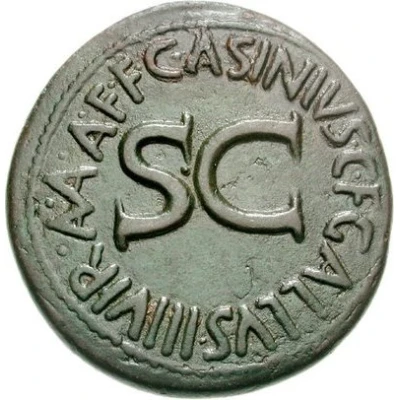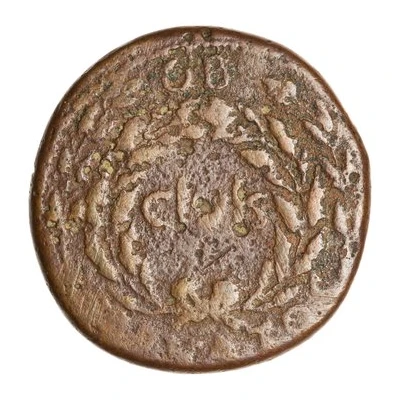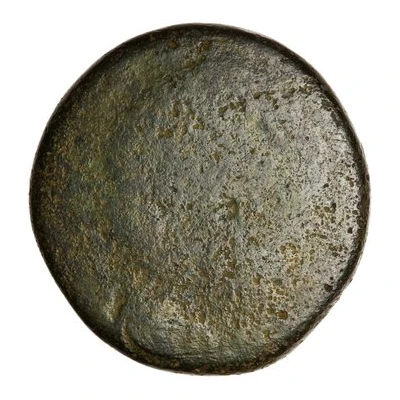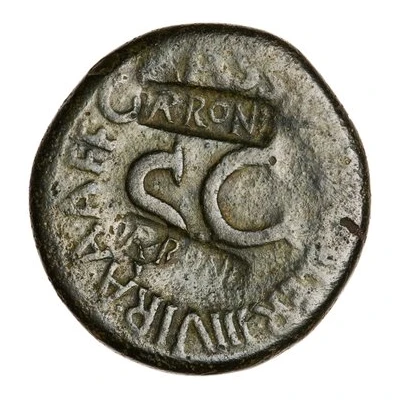


© Classical Numismatic Group, Inc.
Sestertius C ASINIVS C F GALLVS IIIVIR A A A F FS C 16 BC
16 BC year| Bronze | 22.8 g | 35.5 mm |
| Issuer | Rome › Roman Empire (27 BC - 395 AD) |
|---|---|
| Emperor | Augustus (Caius Octavius) (27 BC - 14 AD) |
| Type | Standard circulation coin |
| Year | 16 BC |
| Value | 1 Sestertius = ¼ Denarius |
| Currency | Denarius, Reform of Augustus (27 BC – AD 215) |
| Composition | Bronze |
| Weight | 22.8 g |
| Diameter | 35.5 mm |
| Shape | Round (irregular) |
| Technique | Hammered |
| Demonetized | Yes |
| Updated | 2024-10-06 |
| Numista | N#247851 |
|---|---|
| Rarity index | 94% |
Reverse
Legend surrounding S C.
Script: Latin
Lettering:
C ASINIVS C F GALLVS IIIVIR A A A F F
S C
Translation:
Caius Asinius Gaii Filius Gallus Triumvir Auro, Argento, Aere, Flando, Feriundo. Senatus Consultum.
Gaius Asinius, son of Gaius Gallus, moneyer (Triumvir Monetalis) casting and striking gold, silver, and bronze coins. Decree of the senate.
Comment
Mass varies: 13.46–26.32 g;Diameter varies: 32.5–37 mm;
Source: Online Coins of the Roman Empire (OCRE)
Interesting fact
One interesting fact about this coin is that it features a rare and unique design, depicting the Roman emperor Augustus (also known as Octavian) on the obverse, and on the reverse, it shows the goddess of good fortune, Fortuna, standing on a rock, holding a rudder and a cornucopia. This design is significant because it symbolizes the prosperity and good fortune that Augustus brought to the Roman Empire during his reign. Additionally, the coin's bronze composition and 22.8g weight make it a valuable and sought-after collector's item among numismatists.



